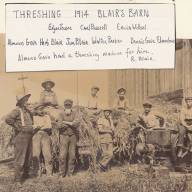When it comes to housing in Vermont and The Valley, we are the architects of our own fate and the situation in which we find ourselves today. Last week’s Mad River Valley Housing Summit detailed exactly how Vermont’s historic housing policies from the 1950s and 1960s led to a housing preference for second homes and lack of diversity.
Subsequent to that, in the 1970s, communities enacted zoning that basically discouraged development and discouraged development on small lots (outside of village settlement patterns). As a result, Vermont has the largest lot sizes in the country per Seth Leonard, one of the speakers at the summit, and the second oldest population in the nation. Those are state-wide trends that are mirrored here in our Valley.
What was made clear at last week’s summit was that the housing scene we’re facing today is the result of intentional efforts to control development. Intentions at the time may have been good, let’s give people the benefit of the doubt. But the result is we have state and federal funds to help house the homeless, but no homes to put them in.
We have state and federal funds to help young families and first-time homebuyers buy a starter home but no homes for them to buy. We have families who want to move here to enjoy the quality of life and the homes that they might buy inhabited by seniors who can’t downsize to smaller places because there are none.
It’s a complicated problem and last week’s summit detailed just how complicated it is. NIMBY-ism stops development as do overly burdensome zoning regulations and lack of infrastructure. Lack of predictability in terms of how long a project might take to permit (see aforementioned NIMBY-ism) dissuades developers who need a reliable path to move projects forward from planning to completion.
The role of infill development was highlighted at last week’s summit. In fill development means building where infrastructure already exists or can be easily created. It means smaller lots sizes, walkable neighborhoods, less car-centric communities that don’t prioritize parking. In 2000 a plan for Irasville and Waitsfield Village was developed that showed full infill development for that area. It was abandoned when voters opted against municipal wastewater several years later.
It’s time to revisit that plan and time to develop municipal wastewater for Waitsfield.












